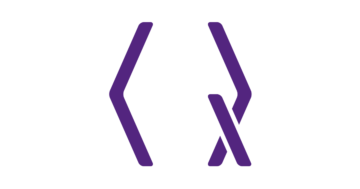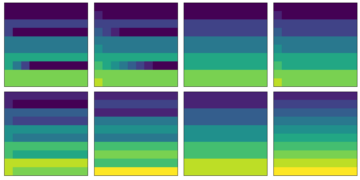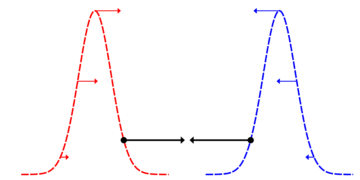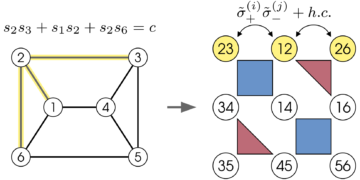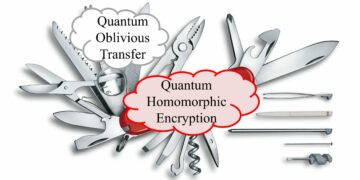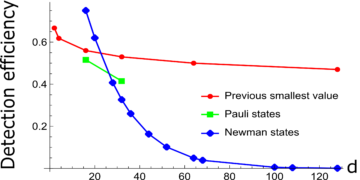Department of Applied Physics, University of Geneva, 1211 Geneva, Switzerland
Find this paper interesting or want to discuss? Scite or leave a comment on SciRate.
Abstract
What is the minimum time required to take a temperature? In this paper, we solve this question for a large class of processes where temperature is inferred by measuring a probe (the thermometer) weakly coupled to the sample of interest, so that the probe’s evolution is well described by a quantum Markovian master equation. Considering the most general control strategy on the probe (adaptive measurements, arbitrary control on the probe’s state and Hamiltonian), we provide bounds on the achievable measurement precision in a finite amount of time, and show that in many scenarios these fundamental limits can be saturated with a relatively simple experiment. We find that for a general class of sample-probe interactions the scaling of the measurement uncertainty is inversely proportional to the time of the process, a shot-noise like behaviour that arises due to the dissipative nature of thermometry. As a side result, we show that the Lamb shift induced by the probe-sample interaction can play a relevant role in thermometry, allowing for finite measurement resolution in the low-temperature regime. More precisely, the measurement uncertainty decays polynomially with the temperature as $Trightarrow 0$, in contrast to the usual exponential decay with $T^{-1}$. We illustrate these general results for (i) a qubit probe interacting with a bosonic sample, where the role of the Lamb shift is highlighted, and (ii) a collective superradiant coupling between a $N$-qubit probe and a sample, which enables a quadratic decay with $N$ of the measurement uncertainty.
Featured image: The general sensing scheme considered in this work. The temperature (or another parameter) of a large sample at thermal equilibrium is estimated by coupling it to a probe for a finite time. We assume that the probe’s evolution is well modeled by Markovian semi-group dynamics. In addition, we allow the possibility that probe’s dynamics is assisted with general fast quantum control. In particular, this may include continuous measurements, adaptive schemes with feedback, and entangling gates with auxiliary quantum systems.
Popular summary
Here, we establish such limits whenever the sensing time is limited. In other words, we address the question: what is the minimum time required to take the temperature of a sample with a given precision? To address this question, we consider a probe (thermometer) interacting with the sample (at some temperature) for a finite time. We then derive fundamental bounds on the measurement precision, and show that in many scenarios these limits can be saturated with a relatively simple experiment.
These limits are valid in a broader context where a physical property of a sample is estimated through its interaction with a probe, whose evolution is well described by a Markovian evolution. Indeed, our results can be understood as a speed limit relating a particular sample-probe interaction with the amount of information (quantified by the Quantum Fisher Information) that can be acquired by the probe in a finite amount of time. Our results hence provide a general framework for placing fundamental limits in finite-time sensing in open (quantum) systems, as well as practical strategies to saturate these bounds.
► BibTeX data
► References
[1] F. Giazotto, T. T. Heikkilä, A. Luukanen, A. M. Savin, and J. P. Pekola, Rev. Mod. Phys. 78, 217 (2006).
https://doi.org/10.1103/RevModPhys.78.217
[2] Y. Yue and X. Wang, Nano Rev. 3, 11586 (2012).
https://doi.org/10.3402/nano.v3i0.11586
[3] M. Mehboudi, A. Sanpera, and L. A. Correa, J. Phys. A 52, 303001 (2019).
https://doi.org/10.1088/1751-8121/ab2828
[4] L. D. Carlos and F. Palacio, eds., Thermometry at the Nanoscale, Nanoscience & Nanotechnology Series (The Royal Society of Chemistry, 2016) pp. P007–522.
https://doi.org/10.1039/9781782622031
[5] A. D. Pasquale and T. M. Stace, in Fundamental Theories of Physics (Springer International Publishing, 2018) pp. 503–527.
https://doi.org/10.1007/978-3-319-99046-0_21
[6] S. L. Braunstein and C. M. Caves, Phys. Rev. Lett. 72, 3439 (1994).
https://doi.org/10.1103/PhysRevLett.72.3439
[7] M. G. A. Paris, J. Phys. A 49, 03LT02 (2015).
https://doi.org/10.1088/1751-8113/49/3/03lt02
[8] L. A. Correa, M. Mehboudi, G. Adesso, and A. Sanpera, Phys. Rev. Lett. 114, 220405 (2015).
https://doi.org/10.1103/PhysRevLett.114.220405
[9] L.-S. Guo, B.-M. Xu, J. Zou, and B. Shao, Phys. Rev. A 92, 052112 (2015).
https://doi.org/10.1103/PhysRevA.92.052112
[10] S. Campbell, M. Mehboudi, G. D. Chiara, and M. Paternostro, New Journal of Physics 19, 103003 (2017).
https://doi.org/10.1088/1367-2630/aa7fac
[11] S. Campbell, M. G. Genoni, and S. Deffner, Quantum Science and Technology 3, 025002 (2018).
https://doi.org/10.1088/2058-9565/aaa641
[12] M. Płodzień, R. Demkowicz-Dobrzański, and T. Sowiński, Phys. Rev. A 97, 063619 (2018).
https://doi.org/10.1103/PhysRevA.97.063619
[13] G. Ruppeiner, Phys. Rev. A 20, 1608 (1979).
https://doi.org/10.1103/PhysRevA.20.1608
[14] T. Jahnke, S. Lanéry, and G. Mahler, Phys. Rev. E 83, 011109 (2011).
https://doi.org/10.1103/PhysRevE.83.011109
[15] M. Salado-Mejía, R. Román-Ancheyta, F. Soto-Eguibar, and H. M. Moya-Cessa, Quantum Science and Technology 6, 025010 (2021).
https://doi.org/10.1088/2058-9565/abdca5
[16] D. Reeb and M. M. Wolf, New Journal of Physics 16, 103011 (2014).
https://doi.org/10.1088/1367-2630/16/10/103011
[17] M. Brunelli, S. Olivares, and M. G. A. Paris, Phys. Rev. A 84, 032105 (2011).
https://doi.org/10.1103/PhysRevA.84.032105
[18] M. Brunelli, S. Olivares, M. Paternostro, and M. G. A. Paris, Phys. Rev. A 86, 012125 (2012).
https://doi.org/10.1103/PhysRevA.86.012125
[19] S. Jevtic, D. Newman, T. Rudolph, and T. M. Stace, Phys. Rev. A 91, 012331 (2015).
https://doi.org/10.1103/PhysRevA.91.012331
[20] W. K. Tham, H. Ferretti, A. V. Sadashivan, and A. M. Steinberg, Scientific Reports 6 (2016), 10.1038/srep38822.
https://doi.org/10.1038/srep38822
[21] A. De Pasquale, K. Yuasa, and V. Giovannetti, Phys. Rev. A 96, 012316 (2017).
https://doi.org/10.1103/PhysRevA.96.012316
[22] P. P. Hofer, J. B. Brask, M. Perarnau-Llobet, and N. Brunner, Phys. Rev. Lett. 119, 090603 (2017a).
https://doi.org/10.1103/PhysRevLett.119.090603
[23] V. Cavina, L. Mancino, A. De Pasquale, I. Gianani, M. Sbroscia, R. I. Booth, E. Roccia, R. Raimondi, V. Giovannetti, and M. Barbieri, Phys. Rev. A 98, 050101 (2018).
https://doi.org/10.1103/PhysRevA.98.050101
[24] R. Román-Ancheyta, B. Çakmak, and Özgür E Müstecaplıoğlu, Quantum Science and Technology 5, 015003 (2019).
https://doi.org/10.1088/2058-9565/ab5e4f
[25] M. T. Mitchison, T. Fogarty, G. Guarnieri, S. Campbell, T. Busch, and J. Goold, Phys. Rev. Lett. 125, 080402 (2020).
https://doi.org/10.1103/PhysRevLett.125.080402
[26] L. Mancino, M. G. Genoni, M. Barbieri, and M. Paternostro, Phys. Rev. Research 2, 033498 (2020).
https://doi.org/10.1103/PhysRevResearch.2.033498
[27] M. R. Jørgensen, P. P. Potts, M. G. A. Paris, and J. B. Brask, Physical Review Research 2 (2020), 10.1103/physrevresearch.2.033394.
https://doi.org/10.1103/physrevresearch.2.033394
[28] S. Seah, S. Nimmrichter, D. Grimmer, J. P. Santos, V. Scarani, and G. T. Landi, Phys. Rev. Lett. 123, 180602 (2019).
https://doi.org/10.1103/PhysRevLett.123.180602
[29] A. Shu, S. Seah, and V. Scarani, Phys. Rev. A 102, 042417 (2020).
https://doi.org/10.1103/PhysRevA.102.042417
[30] I. Henao and R. Uzdin, Quantum 5, 547 (2021).
https://doi.org/10.22331/q-2021-09-21-547
[31] Q. Bouton, J. Nettersheim, D. Adam, F. Schmidt, D. Mayer, T. Lausch, E. Tiemann, and A. Widera, Phys. Rev. X 10, 011018 (2020).
https://doi.org/10.1103/PhysRevX.10.011018
[32] K. V. Hovhannisyan, M. R. Jørgensen, G. T. Landi, A. M. Alhambra, J. B. Brask, and M. Perarnau-Llobet, PRX Quantum 2, 020322 (2021).
https://doi.org/10.1103/PRXQuantum.2.020322
[33] M. T. Mitchison, A. Purkayastha, M. Brenes, A. Silva, and J. Goold, Phys. Rev. A 105, L030201 (2022).
https://doi.org/10.1103/PhysRevA.105.L030201
[34] K. Huang, Introduction to statistical physics (CRC press, 2009).
[35] J. J. . Bollinger, W. M. Itano, D. J. Wineland, and D. J. Heinzen, Phys. Rev. A 54, R4649 (1996).
https://doi.org/10.1103/PhysRevA.54.R4649
[36] S. F. Huelga, C. Macchiavello, T. Pellizzari, A. K. Ekert, M. B. Plenio, and J. I. Cirac, Phys. Rev. Lett. 79, 3865 (1997).
https://doi.org/10.1103/PhysRevLett.79.3865
[37] P. Sekatski, M. Skotiniotis, J. Kołodyński, and W. Dür, Quantum 1, 27 (2017).
https://doi.org/10.22331/q-2017-09-06-27
[38] R. Demkowicz-Dobrzański, J. Czajkowski, and P. Sekatski, Phys. Rev. X 7, 041009 (2017).
https://doi.org/10.1103/PhysRevX.7.041009
[39] S. Zhou, M. Zhang, J. Preskill, and L. Jiang, Nature communications 9, 1 (2018).
https://doi.org/10.1038/s41467-017-02510-3
[40] J. Nettersheim, Q. Bouton, D. Adam, and A. Widera, arXiv preprint arXiv:2203.13656 (2022).
arXiv:2203.13656
[41] L. A. Correa, M. Perarnau-Llobet, K. V. Hovhannisyan, S. Hernández-Santana, M. Mehboudi, and A. Sanpera, Phys. Rev. A 96, 062103 (2017).
https://doi.org/10.1103/PhysRevA.96.062103
[42] K. V. Hovhannisyan and L. A. Correa, Phys. Rev. B 98, 045101 (2018).
https://doi.org/10.1103/PhysRevB.98.045101
[43] P. P. Potts, J. B. Brask, and N. Brunner, Quantum 3, 161 (2019).
https://doi.org/10.22331/q-2019-07-09-161
[44] R. H. Dicke, Phys. Rev. 93, 99 (1954).
https://doi.org/10.1103/physrev.93.99
[45] C. L. Latune, I. Sinayskiy, and F. Petruccione, New Journal of Physics 22, 083049 (2020).
https://doi.org/10.1088/1367-2630/aba463
[46] R. D. Gill and B. Y. Levit, Bernoulli , 59 (1995).
[47] B. B. Mandelbrot, IRE Trans. Inf. Theory 2, 190 (1956).
https://doi.org/10.1109/TIT.1956.1056804
[48] J. Uffink and J. van Lith, Found. Phys. 29, 655 (1999).
https://doi.org/10.1023/A:1018811305766
[49] A. Fujiwara and H. Imai, Journal of Physics A: Mathematical and Theoretical 41, 255304 (2008).
https://doi.org/10.1088/1751-8113/41/25/255304
[50] V. Giovannetti, S. Lloyd, and L. Maccone, Physical review letters 96, 010401 (2006). href http://dx.doi.org/10.1103/PhysRevLett.96.010401.
https://doi.org/10.1103/PhysRevLett.96.010401
[51] H.-P. Breuer, F. Petruccione, et al., The theory of open quantum systems (Oxford University Press on Demand, 2002).
[52] P. P. Hofer, M. Perarnau-Llobet, L. D. M. Miranda, G. Haack, R. Silva, J. B. Brask, and N. Brunner, New Journal of Physics 19, 123037 (2017b).
https://doi.org/10.1088/1367-2630/aa964f
[53] J. O. González, L. A. Correa, G. Nocerino, J. P. Palao, D. Alonso, and G. Adesso, Open Systems & Information Dynamics 24, 1740010 (2017).
https://doi.org/10.1142/s1230161217400108
[54] S. Scali, J. Anders, and L. A. Correa, Quantum 5, 451 (2021).
https://doi.org/10.22331/q-2021-05-01-451
[55] T. V. Tscherbul and P. Brumer, The Journal of Chemical Physics 142, 104107 (2015).
https://doi.org/10.1063/1.4908130
[56] D. Farina and V. Giovannetti, Phys. Rev. A 100, 012107 (2019).
https://doi.org/10.1103/PhysRevA.100.012107
[57] M. Cattaneo, G. L. Giorgi, S. Maniscalco, and R. Zambrini, New Journal of Physics 21, 113045 (2019).
https://doi.org/10.1088/1367-2630/ab54ac
[58] M. Cattaneo, G. L. Giorgi, S. Maniscalco, and R. Zambrini, Physical Review A 101 (2020), 10.1103/physreva.101.042108.
https://doi.org/10.1103/physreva.101.042108
[59] G. McCauley, B. Cruikshank, D. I. Bondar, and K. Jacobs, npj Quantum Information 6 (2020), 10.1038/s41534-020-00299-6.
https://doi.org/10.1038/s41534-020-00299-6
[60] A. Trushechkin, arXiv e-prints , arXiv (2021).
[61] A. Nazir and G. Schaller, in Fundamental Theories of Physics (Springer International Publishing, 2018) pp. 551–577.
https://doi.org/10.1007/978-3-319-99046-0_23
[62] K. D. B. Higgins, B. W. Lovett, and E. M. Gauger, Phys. Rev. B 88, 155409 (2013).
https://doi.org/10.1103/PhysRevB.88.155409
[63] T. Albash, S. Boixo, D. A. Lidar, and P. Zanardi, New Journal of Physics 14, 123016 (2012).
https://doi.org/10.1088/1367-2630/14/12/123016
[64] R. Dann, A. Levy, and R. Kosloff, Phys. Rev. A 98, 052129 (2018).
https://doi.org/10.1103/PhysRevA.98.052129
[65] R. Demkowicz-Dobrzański, M. Jarzyna, and J. Kołodyński, in Progress in Optics (Elsevier, 2015) pp. 345–435.
https://doi.org/10.1016/bs.po.2015.02.003
[66] J. P. Pekola, P. Solinas, A. Shnirman, and D. V. Averin, New Journal of Physics 15, 115006 (2013).
https://doi.org/10.1088/1367-2630/15/11/115006
[67] P. Menczel, C. Flindt, and K. Brandner, Phys. Rev. Research 2, 033449 (2020).
https://doi.org/10.1103/PhysRevResearch.2.033449
[68] S. Gasparinetti, K. L. Viisanen, O.-P. Saira, T. Faivre, M. Arzeo, M. Meschke, and J. P. Pekola, Phys. Rev. Applied 3, 014007 (2015).
https://doi.org/10.1103/PhysRevApplied.3.014007
[69] J. Govenius, R. E. Lake, K. Y. Tan, and M. Möttönen, Phys. Rev. Lett. 117, 030802 (2016).
https://doi.org/10.1103/PhysRevLett.117.030802
[70] B. Karimi, F. Brange, P. Samuelsson, and J. P. Pekola, Nature Communications 11 (2020), 10.1038/s41467-019-14247-2.
https://doi.org/10.1038/s41467-019-14247-2
[71] L. Pezzè, A. Smerzi, M. K. Oberthaler, R. Schmied, and P. Treutlein, Rev. Mod. Phys. 90, 035005 (2018).
https://doi.org/10.1103/RevModPhys.90.035005
[72] A. Recati, P. O. Fedichev, W. Zwerger, J. von Delft, and P. Zoller, Phys. Rev. Lett. 94, 040404 (2005).
https://doi.org/10.1103/PhysRevLett.94.040404
[73] C. Sabin, A. White, L. Hackermuller, and I. Fuentes, Sci. Rep. 4, 6436 (2014).
https://doi.org/10.1038/srep06436
[74] E. B. Norrgard, S. P. Eckel, C. L. Holloway, and E. L. Shirley, New Journal of Physics 23, 033037 (2021).
https://doi.org/10.1088/1367-2630/abe8f5
[75] S. Gröblacher, A. Trubarov, N. Prigge, G. D. Cole, M. Aspelmeyer, and J. Eisert, Nature Communications 6 (2015), 10.1038/ncomms8606.
https://doi.org/10.1038/ncomms8606
[76] A. Lampo, S. H. Lim, M. Á. García-March, and M. Lewenstein, Quantum 1, 30 (2017).
https://doi.org/10.22331/q-2017-09-27-30
[77] A. Frisk Kockum, A. Miranowicz, S. De Liberato, S. Savasta, and F. Nori, Nature Reviews Physics 1, 19 (2019), arXiv:1807.11636.
https://doi.org/10.1038/s42254-018-0006-2
arXiv:1807.11636
[78] A. González-Tudela, V. Paulisch, H. J. Kimble, and J. I. Cirac, Phys. Rev. Lett. 118, 213601 (2017).
https://doi.org/10.1103/PhysRevLett.118.213601
[79] G. Kucsko, P. C. Maurer, N. Y. Yao, M. Kubo, H. J. Noh, P. K. Lo, H. Park, and M. D. Lukin, Nature 500, 54 (2013).
https://doi.org/10.1038/nature12373
[80] S. Deffner and S. Campbell, Journal of Physics A: Mathematical and Theoretical 50, 453001 (2017).
https://doi.org/10.1088/1751-8121/aa86c6
[81] N. Il’in and O. Lychkovskiy, Phys. Rev. A 103, 062204 (2021).
https://doi.org/10.1103/PhysRevA.103.062204
Cited by
[1] Safoura S. Mirkhalaf, Mohammad Mehboudi, and Saleh Rahimi-Keshari, “Operational significance of nonclassicality in nonequilibrium Gaussian quantum thermometry”, arXiv:2207.10742.
[2] Julia Boeyens, Stella Seah, and Stefan Nimmrichter, “Uninformed Bayesian quantum thermometry”, Physical Review A 104 5, 052214 (2021).
[3] Daniel Grimmer, Irene Melgarejo-Lermas, José Polo-Gómez, and Eduardo Martín-Martínez, “Decoding Quantum Field Theory with Machine Learning”, arXiv:1910.03637.
[4] Marek Winczewski and Robert Alicki, “Renormalization in the Theory of Open Quantum Systems via the Self-Consistency Condition”, arXiv:2112.11962.
[5] Ivan Henao, Karen V. Hovhannisyan, and Raam Uzdin, “Thermometric machine for ultraprecise thermometry of low temperatures”, arXiv:2108.10469.
[6] Paolo Abiuso, Paolo Andrea Erdman, Michael Ronen, Frank Noé, Géraldine Haack, and Martí Perarnau-Llobet, “Discovery of Optimal Thermometers with Spin Networks aided by Machine-Learning”, arXiv:2211.01934.
The above citations are from SAO/NASA ADS (last updated successfully 2022-12-08 13:17:27). The list may be incomplete as not all publishers provide suitable and complete citation data.
On Crossref’s cited-by service no data on citing works was found (last attempt 2022-12-08 13:17:25).
This Paper is published in Quantum under the Creative Commons Attribution 4.0 International (CC BY 4.0) license. Copyright remains with the original copyright holders such as the authors or their institutions.


